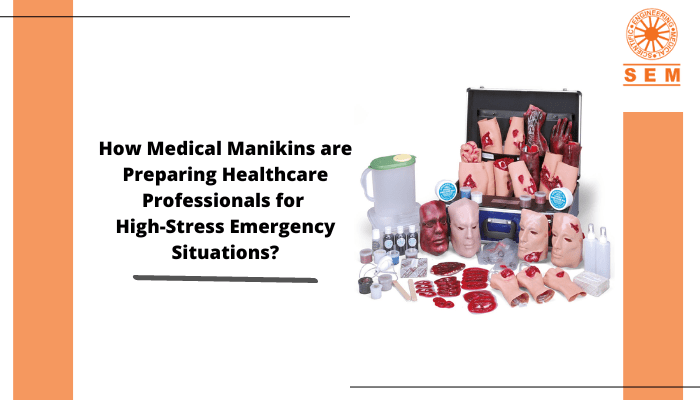How Medical Manikins are Preparing Healthcare Professionals for High-Stress Emergency Situations?
Saving lives is challenging enough without the added pressure of emergency. But day and night, doctors and nurses have to tend to those in the emergency ward.
When you are in a position to save a life, a lot is at stake and you need to do the right thing at the right time. But in a high-stress situation like that, it can be easy to overlook certain details and make a wrong decision. For example, when a patient loses consciousness, one may start delivering chest compressions without checking the vitals first.
Simulation can Provide Unmatched Exposure in Emergency Situation
Theory alone does not suffice to make these students capable enough to deal with whatever emergency situation comes along. But with the state-of-the-art manikins and simulators available today, instructors are able to set up hyper-realistic emergency scenarios in real-time to test and help students build both clinical and communication/emotional skills. With these high-tech medical manikins, they are able to practice in a realistic learning environment.
1. Medical Manikins for a Variety of Emergency Scenarios
It is especially difficult to prepare students for handling emergencies because they cannot be assigned to an actual emergency situation without risking patient lives. But ranging from low-fidelity to high-fidelity and available for specific skills as well, these manikins are able to mimic any medical emergency. Whether it’s cardiac arrest, an epileptic seizure, a patient going into shock, or a neonatal complication that can endanger the lives of the mother and the baby, simulating an emergency situation can equip learners with the tools to handle it correctly. And in addition to making training accessible, simulation can also make it cost-effective.
2. Medical Manikins for Mass Casualties
An emergency may also present itself in the dozens or the hundreds. For example, a concert bombing or an airport disaster may require medical personnel to make multiple critical decisions while also taking triage to save as many lives as they can. In such a scenario, one wrong decision can lead to a series of bad decisions, and cost many lives. Simulation can also help prepare students for disasters with such massive casualties so they can get to save lives without wasting precious time in being overwhelmed and making mistakes. It can also build the competence to treat a large number of people with limited supplies.
Simulation can Help Build a Variety of Skills that Come in Handy During an Emergency
When seeing a patient, a verbal assessment can make the process easier as they tell you what’s wrong or what happened. But this is not always possible in an emergency situation. The patient may be unconscious or unable to speak. Then, you are left reliant on all your senses. By paying attention to what you see, smell, or touch can help you figure out what’s wrong.
Manikins are perfect at building these skills in a learner as they do respond realistically and are lifelike, but may require the learner to use all the information available to them to be able to figure out what’s going on. Through this kind of simulation, they can improve at skills like drug selection, dosage adjustment, timing of administration, monitoring for adverse effects, reduction of waste by interrupting an incorrect order processed in the pharmacy, rounding of doses to the nearest vial size, and reuse of medications.
The goal is to make it feel as real as possible. You would think that students might not take it as seriously since it’s just manikins, but even though it’s all simulated, to a learner, it feels like they are working with a real person with a heartbeat, breathing sounds, and a pulse.
Simulation training has, over the years, been used across medical disciplines to improve skills and instill confidence, allowing students to learn via hands-on experience. Simulation is not only able to teach crucial skills, but also helps reinforce those skills when paired with a lecture-based teaching paradigm. Its effectiveness has been studied year after year, and has cemented it as an indispensable teaching tool for preparing medical personnel to handle emergencies. After all, it can be a matter of life and death.

